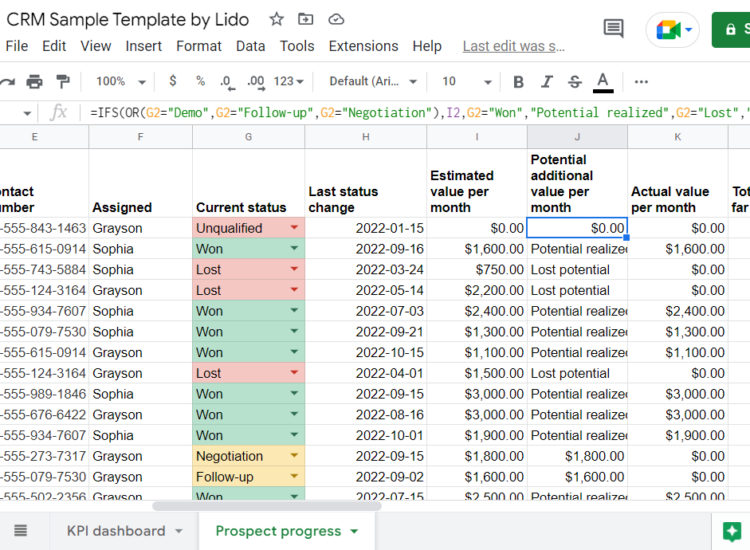The escalating costs and limitations of traditional IT infrastructure are driving many organizations towards hybrid cloud hosting. This approach combines the security of private clouds with the scalability of public clouds, but managing this complex blend presents significant operational challenges. Successfully navigating these challenges requires a deep understanding of resource allocation, security protocols, and cost optimization strategies.
Toc
- 1. Understanding Hybrid Cloud Architecture
- 2. Optimizing Costs in Your Hybrid Cloud
- 3. Related articles 01:
- 4. Enhancing Security in Hybrid Cloud Environments
- 5. Managing and Monitoring Your Hybrid Cloud Infrastructure
- 6. Related articles 02:
- 7. Selecting the Right Hybrid Cloud Hosting Solution
- 8. Conclusion
Understanding Hybrid Cloud Architecture

Hybrid cloud hosting is a sophisticated solution that integrates both private and public cloud resources, offering a versatile platform for organizations. This model allows businesses to enjoy the best of both worlds—combining the security and control of private cloud with the scalability and cost-effectiveness of public cloud services.
Definition of Hybrid Cloud
Hybrid cloud is a combination of private and public cloud resources, creating a unified architecture that enhances operational efficiency. By leveraging this model, organizations can deploy applications across multiple infrastructures while maintaining seamless interconnections. For instance, a hybrid cloud example can be seen in a healthcare provider that keeps sensitive patient records in a private cloud while utilizing a public cloud for data analytics, thus optimizing both security and performance.
Key Components of Hybrid Cloud Architecture
The architecture of hybrid cloud hosting includes various critical components:
- Private Cloud: This can be hosted on-premises or managed by a third-party provider, offering a secure environment for sensitive data.
- Public Cloud: Services like AWS, Azure, or Google Cloud Platform provide scalable resources that can be accessed on-demand.
- Interconnections: Establishing strong connections through APIs, VPNs, or dedicated networks is crucial for ensuring seamless communication between private and public resources.
Comparison with On-Premises and Public Cloud Models
Understanding the hybrid cloud advantages and disadvantages compared to on-premises and public cloud models is essential for IT managers. The table below summarizes these differences:
| Model | Advantages | Disadvantages |
|---|---|---|
| Hybrid Cloud | Flexibility, cost optimization, enhanced security | Complexity in management, potential integration issues |
| On-Premises | Complete control over data and security | High upfront costs, limited scalability |
| Public Cloud | Cost-effective, scalable, minimal maintenance | Less control over data security and compliance |
This comparison highlights how hybrid cloud offers a balanced solution, precisely tailored to an organization’s unique needs.
Optimizing Costs in Your Hybrid Cloud
One of the most compelling aspects of hybrid cloud hosting is its potential for cost optimization. IT managers can strategically allocate workloads to manage expenses effectively while maximizing resource utilization.
Hybrid Cloud Hosting Pricing
Understanding hybrid cloud hosting pricing is crucial for effective budget management. Public cloud services typically operate on a pay-as-you-go model, allowing organizations to pay only for the resources they utilize. This approach contrasts with the capital expenditure associated with maintaining on-premises infrastructure. By analyzing workload requirements, organizations can optimize their hybrid cloud hosting cost effectively.
2. https://minidanang.com/mmoga-choosing-the-best-web-hosting-platform-for-your-small-business/
3. https://minidanang.com/mmoga-honkai-star-rail-private-server-a-comprehensive-guide/
4. https://minidanang.com/mmoga-cloud-storage-web-hosting-the-ultimate-guide-for-e-commerce-businesses/
5. https://minidanang.com/mmoga-ssd-vps-hosting-the-ultimate-guide-for-e-commerce-businesses/
Real-World Cost Optimization Strategies
To achieve cost efficiency, IT managers should adopt several best practices, including workload placement optimization. For instance, a retail company might migrate its customer-facing website to AWS while keeping sensitive financial data on-premises. This approach leverages the public cloud’s scalability while ensuring that critical data remains secure.
Additionally, serverless computing can be utilized for non-critical applications, significantly reducing costs by allowing organizations to pay only for the compute time they consume. This flexibility not only optimizes expenses but also enhances the agility of IT operations.
Best Practices for Cost Optimization
To further drive cost efficiency, IT managers should implement these strategies:
- Right-Sizing Resources: Adjusting resources based on actual usage can prevent overspending.
- Cloud Bursting: This strategy allows organizations to handle sudden spikes in demand by utilizing public cloud resources when needed.
- Management Tools: Utilizing tools that provide insights into resource allocation can help identify areas for cost savings.
Case Studies: Real-World Examples of Cost Optimization
A notable hybrid cloud example of successful cost optimization involves a financial institution that migrated non-critical applications to the public cloud while retaining sensitive customer data on private servers. This strategic move reduced operational costs significantly, demonstrating the financial benefits of hybrid cloud hosting.
Enhancing Security in Hybrid Cloud Environments
Security is a paramount concern for IT managers navigating hybrid cloud hosting environments. The integration of private and public clouds introduces unique security challenges that must be addressed proactively.
Security Considerations
Hybrid cloud environments present specific vulnerabilities due to their dual nature. IT managers must focus on:
- Data Security: Ensuring data is secure both in transit and at rest.
- Access Controls: Implementing stringent access policies to protect sensitive information.
- Regular Security Assessments: Continuously evaluating security protocols to mitigate risks.
Zero Trust Security Model
A critical approach to enhancing security in hybrid cloud environments is the adoption of the Zero Trust Security Model. This model operates on the principle of “never trust, always verify,” meaning that every request, whether it originates from inside or outside the network, must be authenticated and authorized. Technologies like Software Defined Perimeter (SDP) can facilitate Zero Trust by creating secure access points that dynamically adjust based on user and device identities. This proactive stance towards security significantly mitigates potential threats.
Best Practices for Hybrid Cloud Security
To fortify security in hybrid cloud environments, organizations should adopt best practices such as:
- Data Encryption: Protecting data with strong encryption methods.
- Multi-Factor Authentication: Adding an extra layer of security for user access.
- Security Information and Event Management (SIEM): Utilizing SIEM tools to monitor and respond to security threats.
Compliance and Regulatory Requirements
Hybrid cloud solutions can assist organizations in meeting industry-specific compliance standards. By carefully managing data placement and access across public and private clouds, IT managers can ensure adherence to regulations like GDPR and HIPAA while maintaining operational efficiency.
Managing and Monitoring Your Hybrid Cloud Infrastructure
Effective management and monitoring of hybrid cloud infrastructure are essential for optimizing performance and resource allocation. With the right tools and strategies, IT managers can enhance their operational capabilities.
Hybrid Cloud Management Tools and Platforms
Numerous hybrid cloud management platforms are available, each offering unique features to simplify operations. Leading solutions such as VMware Cloud Foundation, Azure Arc, and AWS Outposts provide centralized management capabilities, enabling organizations to oversee their hybrid environments effectively.
2. https://minidanang.com/mmoga-cloud-storage-web-hosting-the-ultimate-guide-for-e-commerce-businesses/
3. https://minidanang.com/mmoga-ssd-vps-hosting-the-ultimate-guide-for-e-commerce-businesses/
4. https://minidanang.com/mmoga-choosing-the-best-web-hosting-platform-for-your-small-business/
5. https://minidanang.com/mmoga-honkai-star-rail-private-server-a-comprehensive-guide/
Implementing Automation and Orchestration
Automation and orchestration play a critical role in managing hybrid cloud environments. By utilizing automation tools, IT managers can streamline operations, optimize resource provisioning, and improve workload management. This not only enhances operational efficiency but also reduces the risk of human error.
Monitoring and Performance Optimization
Robust monitoring and performance optimization are vital for maintaining high availability and performance in hybrid cloud environments. Implementing comprehensive logging and monitoring solutions allows IT managers to proactively identify and address potential issues, ensuring a seamless user experience. Additionally, the increasing adoption of AIOps (Artificial Intelligence for IT Operations) is reshaping hybrid cloud management. AIOps utilizes machine learning to automate anomaly detection, predictive maintenance, and resource optimization, improving efficiency and reducing operational costs. According to Gartner, the growth of AIOps is significantly impacting how organizations manage their IT operations.
Selecting the Right Hybrid Cloud Hosting Solution
Choosing the appropriate hybrid cloud hosting solution is a critical decision for IT managers. Various factors must be considered to align the solution with organizational goals.
Factors to Consider
When evaluating hybrid cloud hosting providers, IT managers should consider:
- Cost: Understanding the total cost of ownership, including hidden fees.
- Security: Assessing the provider’s security measures and compliance capabilities.
- Scalability: Ensuring the solution can grow with the organization’s needs.
- Compliance: Verifying the provider meets industry-specific regulatory requirements.
Evaluating Providers
A structured approach to evaluating potential hybrid cloud providers can streamline the selection process. IT managers can create a checklist that includes key criteria such as service offerings, support, and performance metrics. This framework ensures that the chosen provider aligns with the organization’s operational objectives.
Counterarguments to Hybrid Cloud
While hybrid cloud is often touted as the best solution, it’s important to consider that it may not be suitable for every organization. The complexities and costs associated with managing a hybrid environment can be significant. In some cases, a purely public cloud or on-premises solution might be more suitable depending on the organization’s size, technical expertise, and specific needs. A thorough assessment of organizational requirements is essential to determine the most appropriate approach.
Best Hybrid Cloud Hosting Recommendations
While numerous hybrid cloud hosting solutions are available, selecting the best option depends on the organization’s specific requirements and budget. IT managers should explore different offerings and assess their suitability based on workload demands and desired performance levels.
Conclusion
Hybrid cloud hosting offers IT managers a powerful approach to optimize their infrastructure, balancing cost-effectiveness, security, and scalability. By understanding hybrid cloud architecture, implementing best practices for cost optimization and security, and effectively managing resources, organizations can leverage the full potential of this model. As businesses navigate the complexities of modern IT environments, hybrid cloud hosting stands as a beacon of flexibility, scalability, and efficiency, paving the way for enhanced performance and operational excellence. Consider exploring different hybrid cloud solutions to find the best fit for your specific needs and budget.










